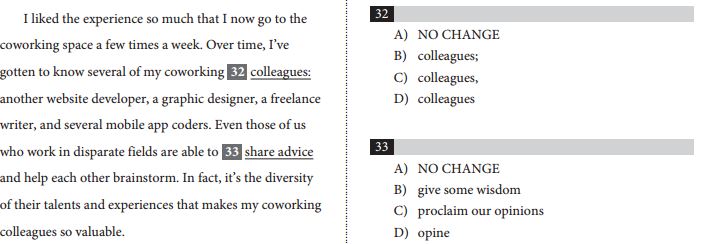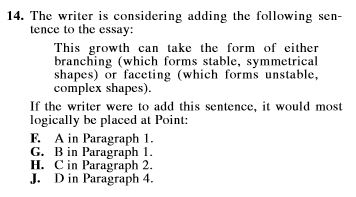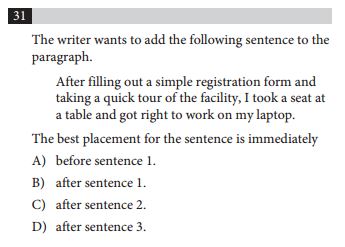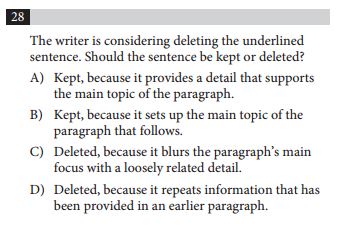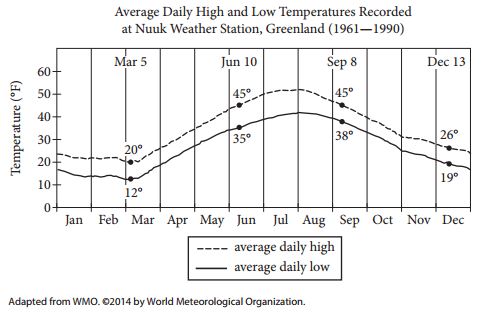English Tip – Redundancy
3.25.19
One of the easiest ways to eliminate answer choices on ACT English test? Eliminate redundancy! #English #ACT #36U
The phrase “caused by all of the precipitation” restates information given earlier in the sentence. On the ACT, find the answer choice that does not contain the redundancy.
ACT English: Should I Choose Who or Whom?

If you’re like many students, you may find the ACT questions dealing with who/whom a bit daunting. Recently one of my ACT Crash Course students stayed after class to ask, “How do I know whether I should choose who or whom? I get confused!”
My quick answer was that whom is used as the object of a preposition. I gave him examples, “To whom, for whom.”
After giving his question a little more thought, I decided a more in-depth response is in order. I reviewed all of the occurrences of who/whom items on recently released ACTs, and here’s what I think students need to know…
Who as the Subject
Who is a pronoun that works as a subject. This means that the word who can take the place of the subject, and it will be doing the action!
English Pro Tip #1: Choose who when the pronoun is used as a subject (doing the action).
Sentences that just rename the subject make choosing who easy:

Who is doing the action – spotting the grizzly bear – so who is the right form.
Whom as the Object
Whom is the object form of the pronoun who. If the pronoun is having the action done to it as the target of the action, the pronoun is serving as an object pronoun — in that case, choose whom!
English Pro Tip #2: Choose whom when the pronoun is the object or target (the action is being done to it).

I invited my friend to travel with me. Whom is the target of the action, so it’s the right choice here.
Whom as the Object of a Prepositional Phrase
Recognizing a prepositional phrase and choosing whom as the object makes for the easiest of your who-or-whom choices.
English Pro Tip #3: Use whom when the pronoun is used as the object of a preposition.

However, just because who follows a preposition, that does not mean it is serving as the object of the preposition. Take a look at this sentence:
She kept you from getting information about who is planning the party.
Who is serving as a subject pronoun doing an action – planning the party. In this sentence, who is the correct choice.
————————Quick Check: How Will This Look on the ACT?————————
1. The students that toured Mammoth Hot Springs also swam in Yellowstone’s Boiling River later in the evening.
A. NO CHANGE
B. that swam in Yellowstone’s Boiling River later that evening also toured Mammoth Hot Springs.
C. who toured Mammoth Hot Springs relaxed by swimming in Yellowstone’s Boiling River later that evening.
D. are swimming in Yellowstone’s Boiling River, after which they toured Mammoth Hot Springs.
2. The Old Faithful Inn recruits high school students who travel from all over the country to work during the summer.
A. NO CHANGE
B. students of which
C. students, those who
D. students, of whom
3. The park ranger found the students to whom the bison had charged.
A. NO CHANGE
B. those who
C. whom
D. that which
4. Yellowstone National Park attracts thousands of visitors each year, many of them come to see Old Faithful.
NO CHANGE
of whom
of who
DELETE the underlined portion.
Answers:
1. C — Choice C uses the pronoun who to refer to the students instead of the pronoun that (choices A and B). The pronoun is also doing the action — touring — so who is the correct form.
2. A — The pronoun who is used as a subject pronoun and is doing the action (traveling).
3. C — The bison charged the group of students. The object form of the pronoun — whom— is the right choice. Choice A is wrong because the wording is awkward. Choose C.
4. B — The pronoun is the object of the preposition. Choose of whom. Choices A and D both create comma splices (two complete thoughts connected with a comma).
More 36U Resources:
36U Blog Posts
36U ACT Tips
36U ACT Prep Program
Side-by-Side Comparison of the Updated ACT and the New SAT

Wow! The SAT has changed. Instead of 10 smaller sections, now there are 4 bigger tests, just like the ACT. The SAT no longer penalizes for guessing. And the essay is now optional. It has even begun incorporating science items in the English and reading tests. To top it off, question formatting is very similar, too. Let’s get right to it…
(This post contains screenshots of items released by ACT Inc. and the CollegeBoard (makers of the SAT). The items are not the property of 36 University.)
Test Order and Structure: ACT vs SAT
Both tests have 4 main tests and an optional essay.
|
ACT |
SAT |
| Section 1 |
English (75 questions in 45 min) |
Reading (52 questions in 65 min) |
| Section 2 |
Math (60 questions in 60 min) |
Writing/Language (44 questions in 35 min) |
| Section 3 |
Reading (40 questions in 35 min) |
Math (20 questions in 25 min). Last 5 are grid-in. |
| Section 4 |
Science (40 questions in 35 min) |
Math (38 questions in 55 min). Last 8 are grid-in. |
| Section 5 (Optional) |
Writing (Optional Essay in 40 min) |
Essay (Optional in 50 minutes) |
| Total Time |
2 hrs 55 min or 3 hrs 35 min w/ Essay |
3 hrs or 3 hrs 50 min w/ Essay |
Scoring
|
ACT |
SAT |
| Max Score |
36 |
1600 |
| Details |
Each test has max score of 36.
Composite is average of four scores. |
SAT Reading max score: 800
SAT Reading derived from Reading & Writing/Language.
SAT Math max score: 800
SAT Math score derived from 2 math sections.
Composite is sum of Reading and Math scores. |
There is no penalty for wrong answers on either test.
Writing scores are kept separate from the other scores on both tests.
Subject Comparisons
ACT English vs SAT Writing/Language
The English tests on both the ACT and SAT have a very similar structure. The SAT English incorporates science graphs occasionally and seems to require a slightly more extensive vocabulary.
ACT Math vs SAT Math
|
ACT |
SAT |
| Setup |
60 questions in 60 minutes |
Part 1 (no calculator): 20 questions in 20 minutes (15 MC, 15 Free Response)
Part 2 (calculator): 38 questions in 55 minutes (30 MC, 8 Free Response) |
| Pace |
60 seconds per item |
Part 1: 60 seconds per item
Part 2: ~87 seconds per item |
| Question Format |
ACT Math has 5 answer choices. |
SAT Math has 4 answer choices on multiple choice questions.
SAT Math also has some Grid-In answer items. |
| Basic Items |
 |
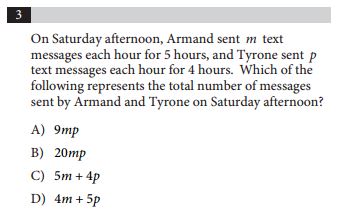 |
| Same Writers? |
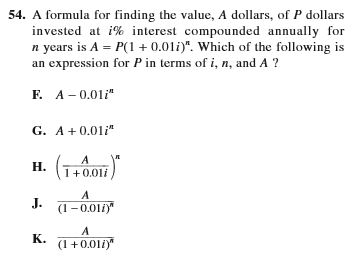 |
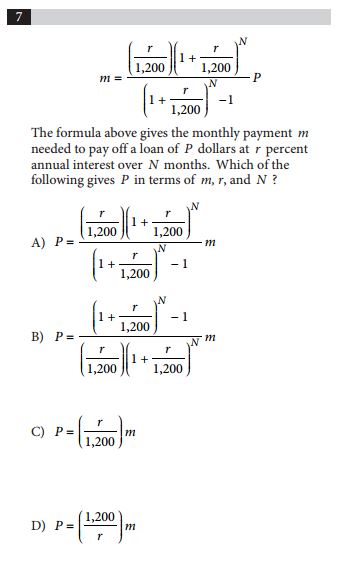 |
| Grid-Ins |
Not applicable. |

***Students grid-in answers on answer document. |
| Notes |
Calculator is allowed on all items. |
Calculator is allowed on Part 2, not Part 1. |
The math tests are not as similar as the English tests.
ACT Reading vs SAT Reading
|
ACT |
SAT |
| Setup |
40 questions divided over 4 passages
35 minutes |
52 questions divided over 5 passages
65 minutes |
| Pace |
52.5 seconds per item |
75 seconds per item |
| Passages |
4 passages:
Prose Fiction
Social Science
Humanities
Natural Science |
5 passages:
U.S. or World Lit
U.S. Constitution or Global Conversation
Social Science
2 Science passages |
| Comparison Items #1 |
 |
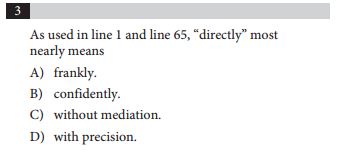 |
| Comparison Items #2 |
 |
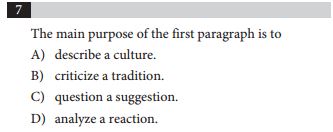 |
| Notes |
|
The SAT has begun adding items that require
students to locate justification in the text.

|
| Notes |
|
SAT Reading has science graphs included
in the 2 science passages.

|
As with the English tests, the Reading tests are very similar. On the SAT English tests, students will work with 2 science passages. On the ACT, the science is in a section on its own.
ACT Science in the SAT Writing and Reading
|
ACT |
SAT |
| Setup |
40 questions divided over 6 or 7 scenarios
35 minutes |
N/A |
| Pace |
52.5 seconds per item |
N/A |
| Question Format |
The ACT Science test requires students to interpret
information in tables and graphs.
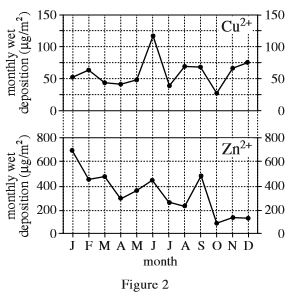
|
The tables and graphs are incorporated in the
SAT English and Reading tests.
|
| Basic Items |
Questions require students to evaluate
experiments and research.
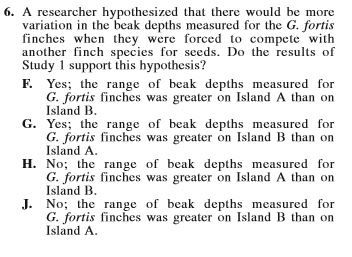
|
The tables and graphs are incorporated in the
SAT English and Reading tests. |
ACT Writing vs SAT Essay
|
ACT |
SAT |
| Setup |
1 essay in 40 minutes |
1 essay in 50 minutes |
| Format |
1 Central Question.
3 Perspectives Provided.
Students are asked to:
-state and develop their own position.
-analyze and evaluate the 3 perspectives
in light of their stated position. |
Students are given a relatively lengthy
passage to evaluate. Instead of stating
their own position, they are asked to dissect,
analyze, and evaluate the passage. |
| Examples |
You can find an example of an ACT Writing
test prompt provided by ACT Inc here:
Sample Prompt |
The Collegeboard has two sample prompts
available on its website:
Prompt 1
Prompt 2 |
Final Word
I don’t consider one test more difficult than the other, and the new SAT is new enough that I haven’t completed enough practice tests to make a complete assessment. At this point, maybe the most obvious difference between the tests is that 1/4 of the ACT score is derived from math items and 1/2 of an SAT score comes from math items.
Kendal Shipley, Ed.D.
6/3/2016
Recent and Related Posts
The Story of Lil Carl and the Arithmetic Series
Get a Copy of Your ACT and Fix the Mistakes
“Can you help me with test anxiety?” #30secondswiththeCEO
36U Blog List
36U ACT Tips
#30SecondswiththeCEO Videos List
36U ACT Prep Program
#1 Skill Needed to Score Well on the ACT May Be Reading Comprehension
Often, I hear from parents of students who have recently received ACT scores between 13 and 17. They are concerned that the low ACT score is going to limit their student’s college options and don’t know what skills to begin addressing.
Standardized tests don’t always accurately reflect what a student really knows or his capabilities, and sometimes students just have an off day on the day of the test.
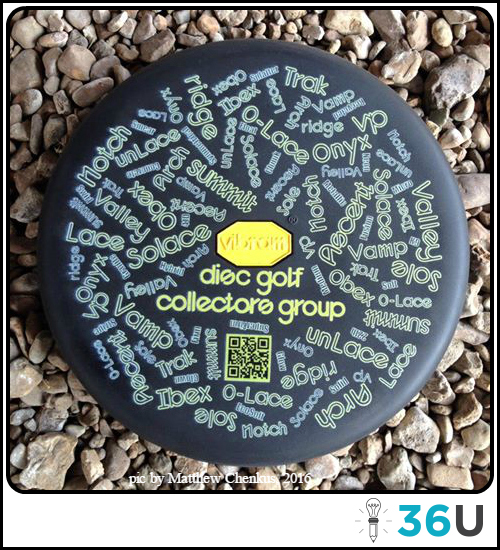
However, more often than not, low ACT scores are symptomatic of one prevailing problem: poor reading comprehension. A student who has weak reasoning and math skills may score poorly on the math and science tests. A student who doesn’t understand the basics of grammar and punctuation will likely score poorly in English. But the student who doesn’t read well will be penalized on all four subject tests. As strange as it may sound, many times low ACT scores can be traced back to a student’s ability to read and comprehend.
(All of the released ACT items below are from 2015-2016 Preparing-for-the-ACT Guide and are the property of ACT Inc., not 36 University.)
The English Test and Reading Comprehension
Examine the two items below. By my count, they are representative of 24 of the 75 English items from the 2015-2016 Guide, and they require strong reading comprehension skills! As you can see, a struggling reader will struggle with the English test.
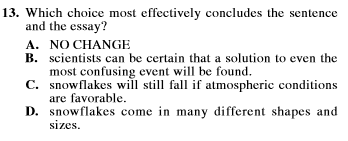
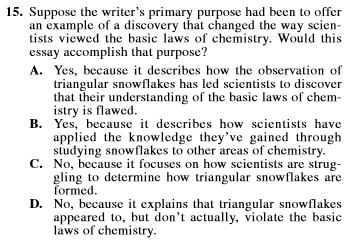
(If you missed our recent post The Juggling Act Required by the ACT, click here.)
The Math Test and Reading Comprehension
Maybe it’s not surprising that the English test requires strong reading skills, but the math test is text-heavy also. In fact, 39 of the 60 items from the 2015-2016 Preparing-for-the-ACT Guide required students to read at least 3 lines of text. Not all math items are like the three shown below, but many of them are.
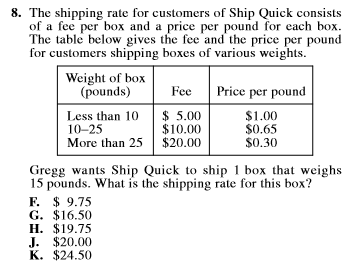
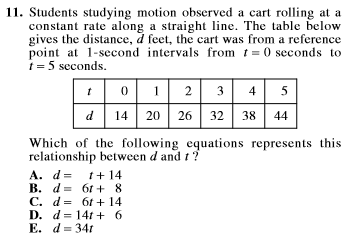
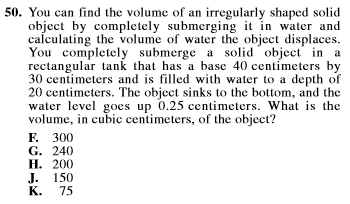
The Reading Test and Reading Comprehension
Of course, the reading test is all about reading comprehension, and it’s one-fourth of an ACT score! Sure, a fair number of the 40 items ask students to interpret meaning from what is explicitly stated in the text. However, a fair number also ask students to reason implicitly to determine inferences, main idea, compare and contrast, etc. It comes as no surprise that strong reading skills are required to score well on the reading test.
The Science Test and Reading Comprehension
To understand the importance of reading skills on the science test, you must first understand the test’s format. The science test consists of six or seven separate scenarios. One of those scenarios is comprised of only text, usually four or five paragraph’s worth. It is like a mini version of a reading scenario. All of the other scenarios require a significant amount of reading, too. In the 2015-2016 Preparing-for-the-ACT Guide, the other five passages accounted for another 19 paragraphs, almost 4 paragraphs per scenario.
To give you an idea of a typical ACT science passage, we have provided a sample passage from the same ACT publication we’ve used for this entire post:

Summary
As you can see, reading comprehension skills are needed on every section of the ACT. Scores in the 13 – 17 range are often a result of insufficient reading skills and not from a lack of content knowledge.
What Can I Do?
Be intentional! In your casual reading—through a news article, or your favorite blog, or that new novel—stop occasionally and ask yourself some very specific questions:
“What was the main idea of that paragraph?” (Try to summarize in 5 words or less.)
“Were the paragraph’s sentences presented in a logical sequence?”
“What was the main idea of the passage?”
“Were the paragraphs within the passage placed in a logical sequence?”
Intentionally evaluating and critiquing your reading material will make you a better reader and writer – and an improved ACT score will be a by-product of your new skills!
Recent and Related Posts
Get a Copy of Your ACT and Fix the Mistakes
The Juggling Act Required by the ACT English Test
3 Types of Probability Items to Expect on the ACT Math Test
36U Blog List
36U ACT Tips
36U ACT Prep Program
The Juggling Act Required by the ACT English Test
The ACT opens with students taking the English portion of the test. On the ACT English test, students are given 45 minutes to answer 75 items. Not only does this section have more items than any of the other sections, but it also allows students, on average, the least amount of time per item: 36 seconds. However, neither endurance nor a quick pace is the most needed skill.
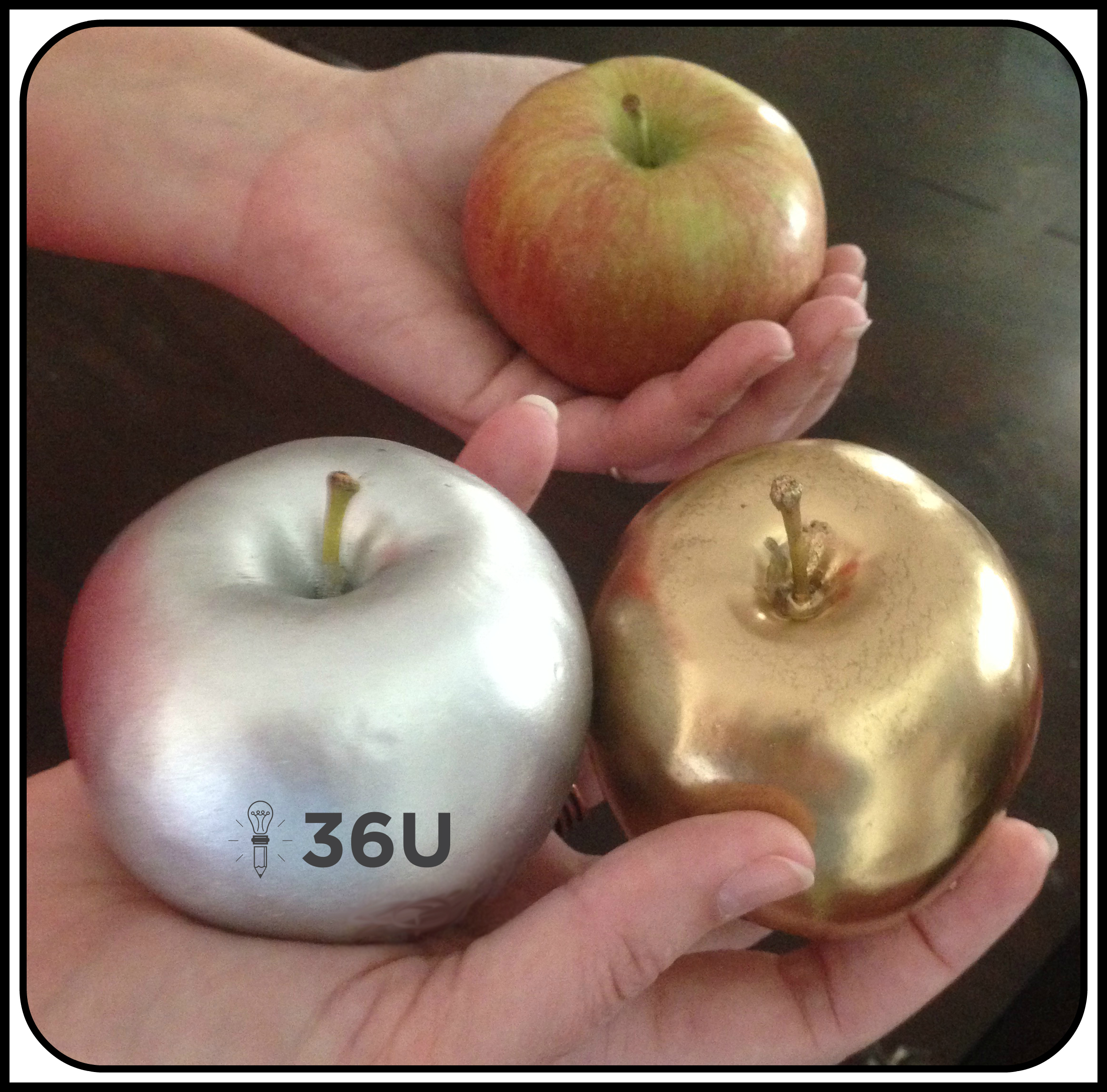
The Structure of the ACT English Test
The 75 items are divided over 5 essays, each with 15 items. The structure for each set of 15 is basically the same. Most of the first 12 to 13 items ask students to fix local issues, those pertaining to one or two sentences. Three to four of the questions, most of which are likely to be found at the end of the set of 15, ask students to evaluate a larger portion of the passage.
On the local issue items, students are tested on a wide range of concepts like subject-verb agreement, modifier placement, punctuation usage, etc. Below, we’ve placed a couple of examples from ACT Inc’s Preparing-for-the-ACT Guide (2015-2016). Both items can be answered correctly by using only the sentence in which the underline is contained.

The final two to three items, and sometimes an item or two found earlier in set of 15, test students’ understanding on a broader scale. Notice how the items below require students to understand the structure and purpose of the entire passage.

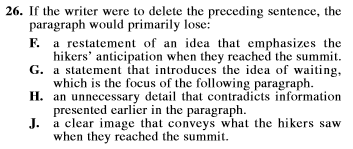
The Most Critical Skill
As you can see, there are two distinctly different types of questions: ones that require students to evaluate on a local level and ones that require evaluation of the entire passage. Students who expect to score in the 30s must be able to handle issues within individual sentences while assessing the structure and meaning of the entire passage. This juggling act is the most critical skill needed to ace the ACT English test.
Recent & Related Posts:
3 Types of Probability Items to Expect on the ACT Math Test
Origami: Sharpen Visual-Spatial Skills & Boost Your ACT Math Score
36U Blog List
36U ACT Prep Program
Your Week-Before-the-ACT Game Plan (Part 1 of 4: English)

Sports Teams Do This; You Should, Too!
Football teams that compete at a high level review hours of their opponent’s game film. Similarly, you’ve already reviewed frequently-tested ACT topics. Teams spend hours implementing a game plan and strategy. You’ve already taken self-timed, self-scored practice tests–you’re that serious! Before the big game, teams will have a walk-through, going over strategy one more time to make sure the game plan is fresh on their minds and fine-tuned. Now is your time to put the final pieces in place, fine-tune your strategy, and build confidence before you step into the academic arena on Saturday.
Here’s part one of that final walk-through to put the finishing touches on your ACT Prep. You won’t be surprised that we start with English because, as you already know, it’s the first section you’ll see on Saturday.
Monday’s Game Plan: Walk Through a Released ACT English Test
Before you start, remind yourself what to expect. My mental monologue goes something like this:
There will be 75 items. I’ll have 45 minutes. (I like to tell myself that’s about 30 seconds per item. It makes keeping track of time easy: if I have 10 items left, I should have about 5 minutes left.) There will be 5 passages, each with 15 items. I expect the first 11 or 12 items to ask me to evaluate local issues–fix sentences, fix transitions, etc. I expect the last few items to ask me to evaluate on a larger scale–analyze paragraph arrangement, determine purpose of passage, etc. So, as I read through a passage, I need to be able to focus on details while piecing together the big picture. I know I’ll need to do this for five passages.
I’ve shared part of my thought processes; spend some time creating your own strategy for tackling the ACT English section.
Now it’s time for action. Grab a released ACT English test. If needed, print from the latest guide released by ACT. Rehearse your expectations and game plan. Then open the exam and skim through the items–not necessarily working them–to test your expectations. Make notes on anything that surprised you or anything you may need to remind yourself of later in the week.
Do you have any tips you would like to add? Please post below. We look forward to reading your comments.
Look for the 36U Week-Before-the-ACT Guide Part 2 tomorrow!
-Kendal Shipley, Ed.D.







